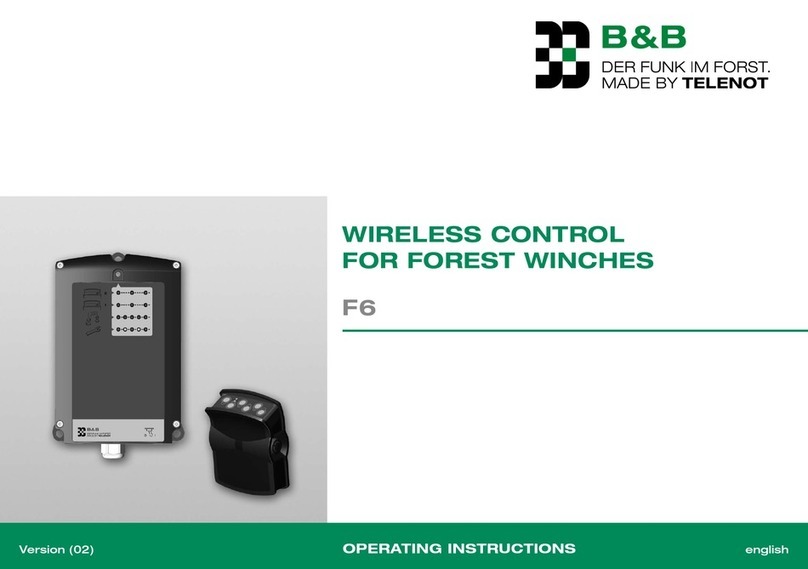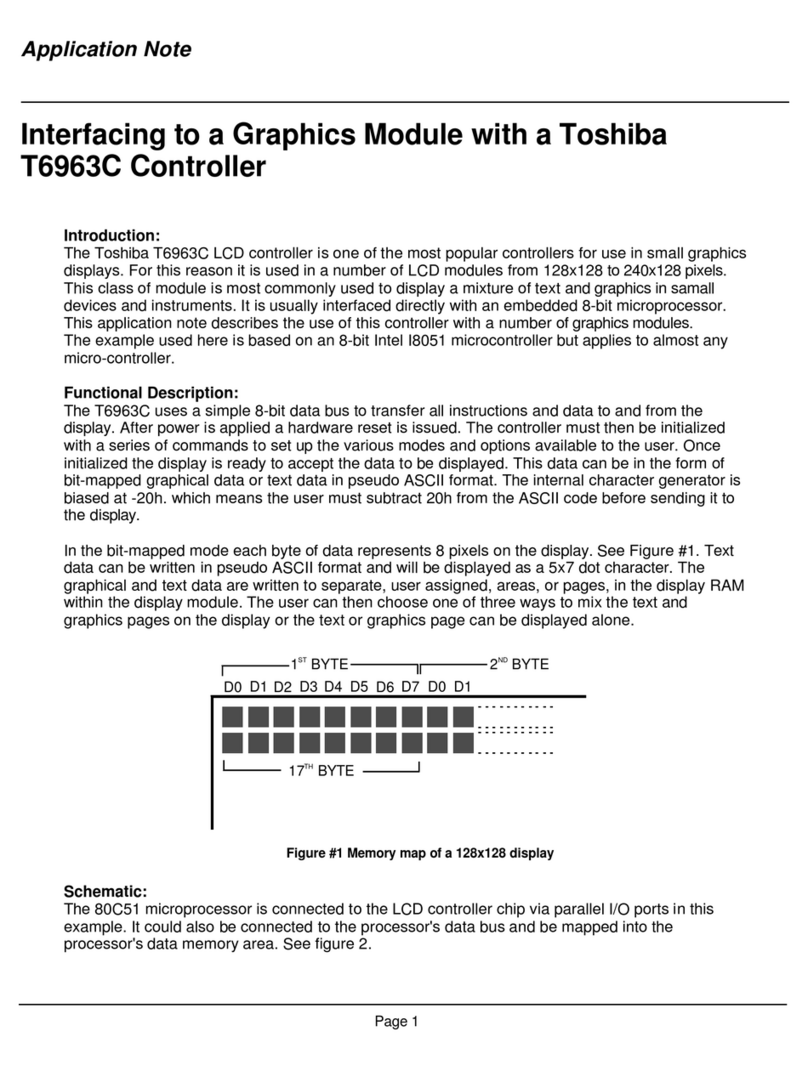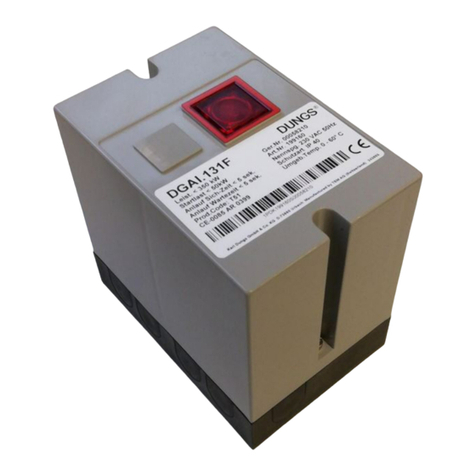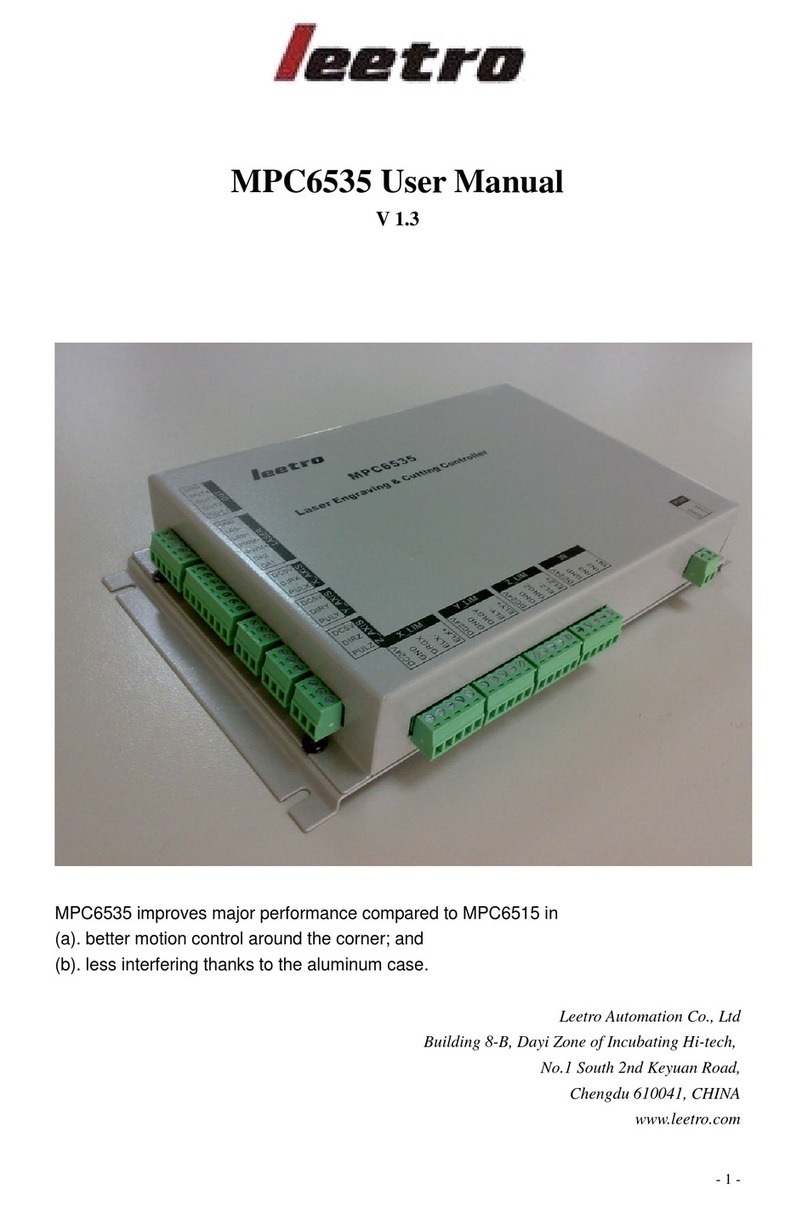Telenot B&B F10 User manual

RADIO CONTROL
FOR FORESTRY CABLE WINCHES
F10
F10DT
F10ET
english
January 2014 OPERATING INSTRUCTIONS

2
TELENOT ELECTRONIC GMBH
B & B Product Division
Wiesentalstraße 42
D 73434 Aalen
GERMANY
Tel. +49 7361 946-4813
Fax +49 7361 946-440
E-Mail: service@forest-frequency.com
Internet: http://www.forest-frequency.com
Translation of the German original operating instructions

3
User notes
1 User notes
Target group
Target groups are forestry contractors, private forest owners,
and firewood collectors.
The radio control is suitable both for use on forestry vehicles
with permanently attached cable winches and for 3-point cable
winches on agricultural tractors and towing vehicles.
Use of the operating instructions
First read the operating instructions through in their entirety
before putting the remote control into operation, and store the
operating instructions away in a suitable protective cover at the
location of use so they can be accessed readily.
Do not put the remote control into operation before you have
familiarized yourself with the points of the operating instruc-
tions that are relevant to the purpose for which you are using it.
In this way you can prevent errors when operating the system.
Correct use of the product
The radio control is used for the convenient and secure remo-
te operation of forestry cable winches and auxiliary electrical
devices. All common winch products and auxiliary equipment is
suitable for this, such as motor gas adjustment, emergency call
and alarm devices, as well as special commands.
Subject to appropriate requirements on the machine, the vehic-
le can also be remotely driven. If interested, please refer to the
manufacturer at the address cited.
These operating instructions enable the safe and efficient use of
the radio control for F10 forestry cable winches.
All stated safety notices and instructions must be observed to
ensure safe working.
Furthermore, local accident prevention regulations and general
safety regulations for the system's area of use apply.
Illustrations are intended to help the reader to understand the
content in general, and can deviate from the actual design.

4
User notes
The manufacturer assumes no liability for damages due to:
Non-observance of the Technical Description
Non-intended use
Use of non-trained personal
Unauthorized conversions
Technical modifications
Use of non-approved spare parts
General Sales Terms
The General Conditions of Sale are included on the website at
http://www.funk-im-forst.de.
Return faulty devices
To avoid damage during transport, choose stable and robust
packaging (the original packaging, if possible) and where
appropriate, protective packaging and a box for shipping. Bear
in mind the weight and protect package contents from shifting.
Also bear in mind protection against electrostatic discharge
(ESD protection). Enclose an error description with the device. A
corresponding response form is available for download on our
website at http://www.funk-im-forst.de/service.
Limitation of liability
All technical information in this description has been created
with the utmost care. Nevertheless, errors cannot be totally
excluded. Therefore, we would like to draw your attention to the
fact that we cannot assume any legal responsibility or any type
of liability for consequences that can be traced back to incorrect
information.
On account of further product development, the design and
wiring of your device may deviate from the information stated
in these instructions.
We would be much obliged if you would inform us of any errors.
We would also like to draw your attention to the fact that the
software and hardware names and trademarks of the com-
panies included in the instructions are generally subject to
trademark or patent law.

5
User notes
Product identification
For queries, complaints, or parametrization requests, you must
specify the device serial number. The receiver ID is located on
the housing panel. The transmitter ID is located on the rear side
of the transmitter.
Using the serial number the manufacturer can identify every
component.
H
Receiver rating plate
Transmitter rating plate
Serial number
Serial number
000000000000031
TELENOT ELECTRONIC GMBH
Wiesentalstraße 42
73434 Aalen
DEUTSCHLAND
F10 S
434 MHz Band
Baujahr 2014
Funksende r
000000000000031
F10 radio control rating plate
Manufacturer
TELENOT ELECTRONIC GMBH
B & B Product Division
Wiesentalstraße 42
D 73434 Aalen
GERMANY
Tel. +49 7361 946-4813
Fax +49 7361 946-440
E-Mail: service@forest-frequency.com
Internet: http://www.forest-frequency.com

6
User notes
NOISE!
Hearing damage due to noise!
Requirements for secure operation
Tips and recommendations for correct operation
Designation for modules/assemblies/components in
danger of electrostatic discharge - ESD
Disposal instruction
Instructions for disposal for hazardous batteries and
rechargeable batteries
Delivery
Accessories, useful add-ons for optimum product use
Option
Parameterizable function
Sequence of action
Key
CAUTION!
… indicates a hazardous situation which, if not avoided,
could result in minor or moderate injury.
NOTICE!
… indicates a potentially hazardous situation that can
lead to property damage if it is not avoided
DANGER!
… indicates a hazardous situation which, if not avoided,
will result in death or serious injuries.
WARNING!
… indicates a potentially hazardous situation that leads
to death or serious injuries if it is not avoided
Explanation of symbols
Symbols indicate safety guidelines and warning notices. The
symbol is accompanied by a signal word that conveys the extent
of the danger.
It is essential to observe these notices to avoid accidents, perso-
nal injury, and damage to property!

7
Table of content
2 Table of content
1 User notes . . . . . . . . . . . . . . . . . . . . . . . . . . . 3
2 Table of content . . . . . . . . . . . . . . . . . . . . . . . 7
3 Safety notes. . . . . . . . . . . . . . . . . . . . . . . . . . 9
3.1 Responsibility of the owner of the system . . . . . . . 9
3.2 Responsibility of the user . . . . . . . . . . . . . . . . . . 9
3.3 Special risks . . . . . . . . . . . . . . . . . . . . . . . . . . 11
3.3.1 Defective control elements . . . . . . . . . . . . . . . 11
3.3.2 Noise . . . . . . . . . . . . . . . . . . . . . . . . . . . . . 11
3.3.3 Short circuit. . . . . . . . . . . . . . . . . . . . . . . . . 11
3.4 Transport, packaging materials and storage . . . . . 11
3.4.1 Safety notes for transport . . . . . . . . . . . . . . . . 11
3.4.2 Handling packaging materials . . . . . . . . . . . . . 12
3.4.3 Storage of packing pieces . . . . . . . . . . . . . . . . 12
3.5 Storage and handling
the transmitter battery (eneloop®) . . . . . . . . . . . 12
3.6 Conduct in the event of danger and accidents . . . 13
4 Delivery . . . . . . . . . . . . . . . . . . . . . . . . . . . 14
5 System overview . . . . . . . . . . . . . . . . . . . . . . 15
6 Function overview . . . . . . . . . . . . . . . . . . . . . 16
6.1 Transmitter . . . . . . . . . . . . . . . . . . . . . . . . . . 16
6.2 Receiver . . . . . . . . . . . . . . . . . . . . . . . . . . . . 17
7 Device features . . . . . . . . . . . . . . . . . . . . . . . 18
7.1 Device variants. . . . . . . . . . . . . . . . . . . . . . . . 18
7.1.1 F10 ET radio control. . . . . . . . . . . . . . . . . . . . 18
7.1.2 F10 DT radio control. . . . . . . . . . . . . . . . . . . . 18
7.2 Device features. . . . . . . . . . . . . . . . . . . . . . . . 19
7.2.1 General features . . . . . . . . . . . . . . . . . . . . . . 19
7.2.2 Transmitter features . . . . . . . . . . . . . . . . . . . 19
7.2.3 Receiver features. . . . . . . . . . . . . . . . . . . . . . 19
7.2.4 Options . . . . . . . . . . . . . . . . . . . . . . . . . . . 20
8 Functional description. . . . . . . . . . . . . . . . . . . 22
8.1 Structure . . . . . . . . . . . . . . . . . . . . . . . . . . . 22
8.1.1 F10ET . . . . . . . . . . . . . . . . . . . . . . . . . . . . 22
8.1.2 F10ET with stutter brake option . . . . . . . . . . . 22
8.1.3 F10DT . . . . . . . . . . . . . . . . . . . . . . . . . . . . 23
8.1.4 F10 receiver . . . . . . . . . . . . . . . . . . . . . . . . . 23
8.2 Functions . . . . . . . . . . . . . . . . . . . . . . . . . . . 24
8.2.1 Pull drum . . . . . . . . . . . . . . . . . . . . . . . . . . 24
8.2.2 Release brake . . . . . . . . . . . . . . . . . . . . . . . 25
8.2.3 Gas adjustment . . . . . . . . . . . . . . . . . . . . . . 26
8.2.4 Active emergency call function
("Active emergency") . . . . . . . . . . . . . . . . . . . 27
8.2.5 Passive emergency call function
("Passive emergency") . . . . . . . . . . . . . . . . . . 28
8.2.6 Motor start / "Motor STOP" (optional) . . . . . . . . 29
8.2.7 Stutter brake (optional) . . . . . . . . . . . . . . . . . 30
8.2.8 Anti-tipping function AKS (optional) . . . . . . . . . 30
8.2.9 Remote aerial AA F10 (optional) . . . . . . . . . . . . 31
8.2.10 Emergency call SPT (optional) . . . . . . . . . . . . . 31
8.2.11 Changing the radio channel . . . . . . . . . . . . . . 32
9 Accessories . . . . . . . . . . . . . . . . . . . . . . . . . 33
10 Mechanical structure . . . . . . . . . . . . . . . . . . . 34
10.1 F10S transmitter . . . . . . . . . . . . . . . . . . . . . . 34
10.2 F10E receiver . . . . . . . . . . . . . . . . . . . . . . . . 34
11 Assembly . . . . . . . . . . . . . . . . . . . . . . . . . . 35
11.1 F10S transmitter . . . . . . . . . . . . . . . . . . . . . . 35
11.1.1 Carrying on the body . . . . . . . . . . . . . . . . . . . 35
11.1.2 Mounting with bracket for transmitter . . . . . . . 36

8
Table of content
11.2 F10E receiver . . . . . . . . . . . . . . . . . . . . . . . . 37
11.2.1 Assembly location requirements . . . . . . . . . . . 37
11.2.2 F10E receiver installation . . . . . . . . . . . . . . . . 38
12 Connections and interfaces . . . . . . . . . . . . . . . 39
12.1 Position . . . . . . . . . . . . . . . . . . . . . . . . . . . . 39
12.2 Connection type . . . . . . . . . . . . . . . . . . . . . . . 39
12.3 Connection configuration . . . . . . . . . . . . . . . . . 40
12.3.1 Socket 1 . . . . . . . . . . . . . . . . . . . . . . . . . . . 40
12.3.2 Socket 2 . . . . . . . . . . . . . . . . . . . . . . . . . . . 41
12.3.3 Socket 4 . . . . . . . . . . . . . . . . . . . . . . . . . . . 42
12.3.4 Plug 2. . . . . . . . . . . . . . . . . . . . . . . . . . . . . 42
13 Installation . . . . . . . . . . . . . . . . . . . . . . . . . 43
14 Wiring diagrams . . . . . . . . . . . . . . . . . . . . . . 44
15 Parameterization. . . . . . . . . . . . . . . . . . . . . . 45
15.1 Who performs the parameterization? . . . . . . . . . 45
15.2 Stutter brake parameterization . . . . . . . . . . . . . 45
15.2.1 Brake open time (OT) parameterization . . . . . . . 46
15.2.2 Brake closed time (CT) parameterization . . . . . . 47
16 Commissioning . . . . . . . . . . . . . . . . . . . . . . . 48
16.1 Requirements . . . . . . . . . . . . . . . . . . . . . . . . 48
16.2 Preparation . . . . . . . . . . . . . . . . . . . . . . . . . . 48
16.2.1 Receiver connection. . . . . . . . . . . . . . . . . . . . 48
16.2.2 Transmitter battery installation . . . . . . . . . . . . 48
16.3 Functional testing . . . . . . . . . . . . . . . . . . . . . . 49
16.4 Fault-free operation. . . . . . . . . . . . . . . . . . . . . 50
16.4.1 Commissioning check list . . . . . . . . . . . . . . . . 50
17 Operation . . . . . . . . . . . . . . . . . . . . . . . . . . 51
17.1 Safety notices for operation . . . . . . . . . . . . . . . 51
17.2 F10E receiver . . . . . . . . . . . . . . . . . . . . . . . . 52
17.3 F10S transmitter . . . . . . . . . . . . . . . . . . . . . . 53
17.3.1 F10S transmitter LED displays . . . . . . . . . . . . . 53
17.3.2 Release brake . . . . . . . . . . . . . . . . . . . . . . . 54
17.3.3 Permanent release . . . . . . . . . . . . . . . . . . . . 55
17.3.4 Pull drum . . . . . . . . . . . . . . . . . . . . . . . . . . 56
17.3.5 Gas+ . . . . . . . . . . . . . . . . . . . . . . . . . . . . . 57
17.3.6 Gas– . . . . . . . . . . . . . . . . . . . . . . . . . . . . . 57
17.3.7 "Motor start" . . . . . . . . . . . . . . . . . . . . . . . . 58
17.3.8 Motor STOP . . . . . . . . . . . . . . . . . . . . . . . . . 59
17.3.9 "Additional command A" . . . . . . . . . . . . . . . . 59
17.3.10 "Stutter brake" . . . . . . . . . . . . . . . . . . . . . . . 60
17.3.11 Active emergency . . . . . . . . . . . . . . . . . . . . . 61
17.3.12 Reset "Active emergency" . . . . . . . . . . . . . . . . 62
17.3.13 Switch on "Passive emergency" . . . . . . . . . . . . 62
17.3.14 Reset "Passive emergency" . . . . . . . . . . . . . . . 63
17.3.15 Switch off "Passive emergency" . . . . . . . . . . . . 64
17.3.16 F10 DT radio control device version . . . . . . . . . . 65
17.4 Eliminate fault states. . . . . . . . . . . . . . . . . . . . 66
18 Maintenance and service . . . . . . . . . . . . . . . . . 67
18.1 Recommended maintenance interval . . . . . . . . . 67
18.2 Scope of maintenance . . . . . . . . . . . . . . . . . . . 67
18.2.1 Cleaning the transmitter and receiver . . . . . . . . 68
18.2.2 Transmitter batteries . . . . . . . . . . . . . . . . . . . 68
18.2.3 Fuse replacement on receiver F10E. . . . . . . . . . 68
19 Disassembly and disposal . . . . . . . . . . . . . . . . 70
19.1 Decommission . . . . . . . . . . . . . . . . . . . . . . . . 70
19.2 F10E receiver disassembly . . . . . . . . . . . . . . . . 70
19.3 Disposal . . . . . . . . . . . . . . . . . . . . . . . . . . . . 71
20 Technical Data . . . . . . . . . . . . . . . . . . . . . . . 72
21 Declaration of conformity . . . . . . . . . . . . . . . . 74

9
Safety notes
3 Safety notes
The operating instructions provide important information for
handling the device. All stated safety notices and instructions
must be observed to ensure safe working.
3.1 Responsibility of the owner of the system
The receiver may only be connected by a specialist accor-
ding to the pin assignment diagram enclosed.
The radio control may only be operated in a technically per-
fect state. In the event of faults and defects occurring which
could compromise safety, the system must be switched off
immediately and repaired by a specialist.
If a wireless control device is used you must ensure that it
does not interfere with the other systems around it and it
itself is not interfered with by them.
A speed adjustment from the radio remote control is only
permitted if the design ensures that the cable intake speed
does not exceed 0.6 m/s and the change of the cable intake
speed is by no more than 20 percent.
Conduct regular visual inspections in order to allow dama-
ged cables, plugs, and other equipment necessary for safety
to be repaired prior to starting work.
People whose responsiveness is impaired by the influence
of medication, alcohol, or drugs may not put the radio con-
trol into operation, operate, maintain, or repair it.
3.2 Responsibility of the user
DANGER!
Danger from vehicles tipping over
Ensure that the vehicle has the necessary stability.
Check the subsoil.
Recommendation: the anti-tipping system option.
DANGER!
Danger from pulling up tree trunks
Do not touch the towing cable during operation!
Nobody should be located around the intake zone of the
cable winch!
DANGER!
Danger from tree trunks falling down
Keep a safe distance from the cable winch.
People carrying medical devices should check the compati-
bility of their devices with the radio control unit that is built
according to EN 62479.

10
Safety notes
DANGER!
Danger from the cutting off and restoration of the pow-
er supply for the transmitter / receiver
Nobody should be located around the intake zone of the
cable winch!
Keep a safe distance from the cable winch.
Wear protective work clothing suitable for the activity and
the deployment location (PPA).
Before switching on the radio control, ensure that nobody
could be put at risk from operation.
Always work with a direct line of sight to the machine and
proceed with particular caution if you are not yet familiar
with operating the remote control.
Ensure that you do not accidentally mix up the cable mo-
vement directions when changing locations or confuse the
two sides with double-drum winches.
To ensure that a work phase ends and consequently safe
conditions can be established on site in the highly unlikely
event of total failure of the battery, it is recommended that
you always carry two spare batteries and the manual con-
trol for the winch with you in the vehicle.
The stop and emergency off switch on the transmitter
only affects the winch and is not to be compared with the
machine's emergency off.
All non-observance of the safety information may result in
serious accidents and injuries.
In addition to generally applicable regulations for accident
prevention, the local ones should also be observed.
Follow the instructions in the section "Maintenance".
Only use the radio control within the climatic, environmen-
tal conditions that are specified in the section "Technical
data".
DANGER!
Danger from unintentional triggering of functions or
starting up
Ensure that no unintended actuation of the transmitter
can be caused by items of clothing and such like.
Switch the transmitter off during break times and at the
end of work without fail and secure it against unautho-
rized access (e.g. from children).
Requirements for safe operation

11
Safety notes
3.3 Special risks
3.3.1 Defective control elements
CAUTION!
Residual risk!
The receiver itself does not trigger any dangerous com-
mands; e.g. through switching off a command, actua-
ting the stop and emergency call switch, or switching
off the transmitter. Nevertheless, there is residual risk
from the radio control that cannot be ruled out; e.g. if a
solenoid valve of the winch is mechanically blocked and
as a result a command such as "Pull" continues to be
executed.
3.3.2 Noise
CAUTION!
Hearing damage due to noise!
When you are working in the vicinity of audible alarm
messages (> 85 dBA), wear hearing protection.
Remain in the vicinity of audible warning devices only
for as long as required.
3.3.3 Short circuit
WARNING!
Fire hazard from short circuits!
In the event of a short circuit, very high currents may
occur which could heat up plug connections and cables
considerably, for example. A fire could potentially result.
The supply voltage of the receiver must be protected
with a 15 A fuse to prevent the risk of fire.
3.4 Transport, packaging materials and storage
3.4.1 Safety notes for transport
NOTICE!
In the case of incorrect transport, substantial property
damage can arise.
Be careful when you unload the packing pieces or carry
out transport within your company premises. Observe
the symbols on the packaging.
Ensure that you are ready to start assembly before you
remove the packaging.
Transportation inspection
When you receive the delivery, immediately check it for
completeness and transport damage.
If a delivery has transport damage that can be recog-
nized externally, do not accept the delivery – or if you
accept the delivery, do so under reservation only. Tender
a complaint.

12
Safety notes
3.4.2 Handling packaging materials
Packaging materials are valuable raw materials which can often
be used further or reprocessed appropriately and recycled.
Dispose of packaging materials in an environmentally com-
pliant manner.
Observe the locally applicable waste disposal regulations.
Commission a company specializing in disposal, if necessary.
DANGER!
Danger of suffocation and injury for children arising
from packaging material
Keep packaging materials away from children.
3.4.3 Storage of packing pieces
Store packing pieces under the following conditions:
Do not store in the open air
Store in dry and dust-free conditions
Do not expose to any aggressive media
Protect from direct sunlight
Avoid mechanical vibrations
Storage temperature: see technical data
Relative humidity: see technical data
In the case of storage for longer than 3 months, inspect the
general state of all parts and packaging regularly. If neces-
sary, recondition or replace the packaging.
3.5 Storage and handling the transmitter battery
(eneloop®)
Batteries gradually lose capacity with age and operating
times become shorter.
Only recharge the battery when it is empty. If it is charged
after only a short period of operation, this merely shortens
the service life.
Do not charge the battery in temperatures below 0°C or
over +40°C. The battery should preferably be charged within
a temperature range of +10°C to +30°C.
If handled properly, the lifetime of the battery is around
1,500 charge and discharge cycles. After further charging
cycles and at temperatures below 0°C the capacity can drop
appreciably.
An exhaustive discharge, which is damaging to the battery,
is reliably prevented, because the transmitter automatically
switches itself off (passive emergency = off) when it is not
used for longer than a parametrized period of time (e.g. 20
minutes) or if the battery is discharged.
In the event of lengthy periods of shutdown the batteries
should be charged in advance.
¹ eneloop ® is a trademark of SANYO.
eneloop® battery technology enables up to 50 hrs of
continuous transmission without recharging; even if
– as occurs regularly in privately owned forests – instan-
ces of use are separated by weeks or months. eneloop®
batteries only lose 15% of capacity per year (as opposed
to up to 100% in conventional quality batteries)
1

13
Safety notes
CAUTION!
Eye injuries or property damage can occur if the batte-
ries are not handled properly!
Only charge the batteries in charging devices that have
either been supplied or recommended by the manufacturer.
Keep the unused batteries far away from metallic objects
which could cause a bridging of the contacts.
Only use the batteries in the devices that are intended for
them (battery technology and type).
Fluid can emerge from the battery in the event of incorrect
usage. Avoid contact with it. In the event of accidental con-
tact with the battery fluid, rinse with water. If battery fluid
gets in the eyes also seek medical attention.
In accordance with the battery ordinance, batteries
must not be disposed of with domestic waste!
Batteries purchased from TELENOT can be returned free
of charge, where they are disposed of properly.
3.6 Conduct in the event of danger and accidents
Preventive measures
You are always prepared for accidents or fire.
Store the first-aid equipment (medical kit, blankets, etc.)
within easy reach.
Store the fire extinguisher within easy reach.
Ensure personnel are familiar with accident notification,
first-aid, and rescue equipment.
Clear access routes for rescue vehicles.
In the event of problems: handle correctly!
Put the device out of operation immediately.
Rescue all persons from the danger zone.
Initiate first-aid measures.
Inform the manager at the location of use.
Notify a doctor and/ or the fire department.
Clear access routes for rescue vehicles.
NiMH

14
Delivery
Table: F10 DT product contents
4 Delivery
Art.-No. Name Delivery
109536000 F10 ET radio control - F10 S ET transmitter
- F10 E receiver with connection cable and plug
- Pin assignment diagram, valid for your winch
- 230 V battery charger A-LG230V
- Accessories kit with 4 NiMH Sanyo eneloop®AA batteries in a plastic box, waist belt
and chest carrying belt, 3metal vibration dampers for F10E receiver and B&B pen
- F10 original operating instructions
- F10 original operating instructions English translation
- Warranty extension form
Art.-No. Name Delivery
109536010 F10 DT radio control - F10 S DT transmitter
- F10 E receiver with connection cable and plug
- Pin assignment diagram, applicable to your winch
- 230 V battery charger A-LG230V
- Accessories kit with 4 NiMH Sanyo eneloop®AA batteries in a plastic box, waist belt
and chest carrying belt, 3 metal vibration dampers for F10E receiver and B&B pen
- F10 original operating instructions
- F10 original operating instructions English translation
- Warranty extension form
Table: F10 ET product contents

15
System overview
5 System overview
The F10 radio control is used for the wireless control of cable
winches. Depending on the model, single (ET) and double-drum
winches (DT) of all makes can be controlled.
The F10 radio control can be extended with various
options (see the section on device features/options).
Additional
command
Additional
command
Additional
command
CCB
Emergency call
device
Emergency call
device
comtac 2204 comtac 2204
Anti-tipping system Anti-tipping system
AKS Mini AKS Mini
Transmitter Transmitter
F10 S (ET) F10 S (DT)
Receiver
F10 E
Winch
release brake /
pull drum
Winch left
release brake /
pull drum
Winch right
release brake /
pull drum
Gas
+/–
Gas
+/–
Motor
start/
STOP
Motor
start/
STOP
Stutter
brake
Overview: F10 connection to a machine

16
Function overview
The electronics are housed in a rubber-reinforced enclosure
made of glass fiber-reinforced polyamide and protected against
the ingress of dust and hose water (protection class IP65).
The aerial is integrated in the housing. The control elements
are surrounded by a protective collar which withstands great
mechanical stress. The two eneloop®(AA) batteries provide the
transmitter with power for up to 50 hrs of continuous transmis-
sion in normal operation. The battery can be charged up using
the charger supplied in the package. Two spare batteries are
contained within the package.
6 Function overview
The F10 radio control was specially designed for the harsh requi-
rements of the forest.
Sophisticated radio electronics in a robust housing makes the
F10 the optimum device for professional log-moving work.
The radio control is suitable both for use on forestry vehicles
with permanently attached cable winches and for 3-point cable
winches on agricultural tractors and towing vehicles.
Depending on the model, single (ET) and double-drum winches
(DT) of all makes can be controlled.
6.1 Transmitter
F10S transmitter
The transmitter is small, light, and handy and can be worn on
the hip, in front of the stomach, or on the chest comfortably. The
ergonomic design of the control panel enables fatigue-proof
working and secure operation, even with gloves on.

17
Function overview
6.2 Receiver
F10E receiver
Diagnostics LED
On/off switch
O = off
I = on
The receiver features a diagnostics LED through which impor-
tant output functions and system notifications are displayed
using colors (red, green, yellow) and various blinking rhythms.
This allows quick monitoring of the radio control on site.
The receiver is switched on and off using a switch.
The receiver's electronics is housed in a solid enclosure made of
polyamide and protected against the ingress of dust and splash
water (protection class IP65).

18
Device features
F10ET
Set F10ET (ready for connection) for single-drum winches with
two additional commands (optional)
Functions:
Pull
Brief and permanent brake release
Gas +/–
Immediate permanent release
Additional commands: (Option MAS)
Motor start/STOP
Additional command A: PTO shaft on
7.1.2 F10 DT radio control
F10DT
Set F10DT (ready for connection) for double-drum winches with
three additional commands (MAS option)
Functions
Pull (left/right)
Brief and permanent brake release (left/right)
Gas +/–
Immediate permanent release (left/right)
Additional commands: (Option MAS)
Motor start/STOP
Additional command A: PTO shaft on
Additional command B: unassigned, free
7 Device features
7.1 Device variants
7.1.1 F10 ET radio control

19
Device features
7.2 Device features
7.2.1 General features
Operationally safe function on the 70-cm ISM band
Bidirectional radio technology
3 working channels
Individual adjustments to the special circumstances and ty-
pes of operation of a wide range of winch operating modes.
Operating temperature –20°C to +60°C
7.2.2 Transmitter features
Ergonomically designed control panel
Robust, glass fiber-reinforced housing with surrounding
protective rubber edges
High-quality toggle switch for long service life
Stop and emergency switch with active emergency call
function
Motion and position sensors for passive emergency call
function
eneloop® AA batteries replaceable battery system
Energy-saving battery design for 50 hrs of operation with a
battery charger
Protection type IP65
Dimensions (W x H x D) 116 x 161 x 61 mm
Weight approx. 600 g
7.2.3 Receiver features
Shock-proof housing made from PC/ABS polyamide
On/off switch
Diagnostics LED
Protection type IP65
Dimensions (W x H x D) 152 x 218 x 51/66 mm
Operating voltage +10V to +30V DC
Weight approx. 670 g

20
Device features
7.2.4 Options
For F10 ET and F10 DT there are different options which you can order with the package and which are pre-installed at the
factory:
F10 ET device version
Option Art.-No. Note
Stutter brake
(Option SB)
109536054 Function at the factory
Periods are parameterizable
Remote aerial
(Option AA F10)
109536050 BNC socket for external aerial installed at the factory
The external aerial for attaching (art. no. 109535858) or for remote installation (art. no.
109535861) must be ordered separately.
Interface for anti-
tipping system
(Option AKS Mini)
109536051 Interface for anti-tipping system AKS2515 MINI from the company Biastec (http://
www.biastec.at) pre-equipped at the factory
Emergency call SPT
straight from the
factory
(Option
comtac2204-C)
109536052 Equipped at the factory with the emergency call SPT comtac2204-C, housing: W×H×D
(152×218×66)mm and the remote aerial option (AAF10): BNC socket for external
aerial installed at the factory.
The external aerial for attaching (art. no. 109535858) or for remote installation (art. no.
109535861) must be ordered separately.
Motor start/STOP
(Option MAS)
Including additio-
nal command A
109536055 Parameterizable:
Motor start via motor STOP or motor start, Motor STOP direct
Table: F10 ET options
This manual suits for next models
2
Table of contents
Other Telenot Controllers manuals
Popular Controllers manuals by other brands
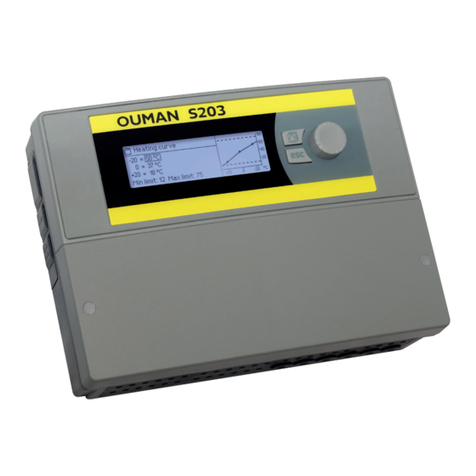
OUMAN
OUMAN S203 user manual
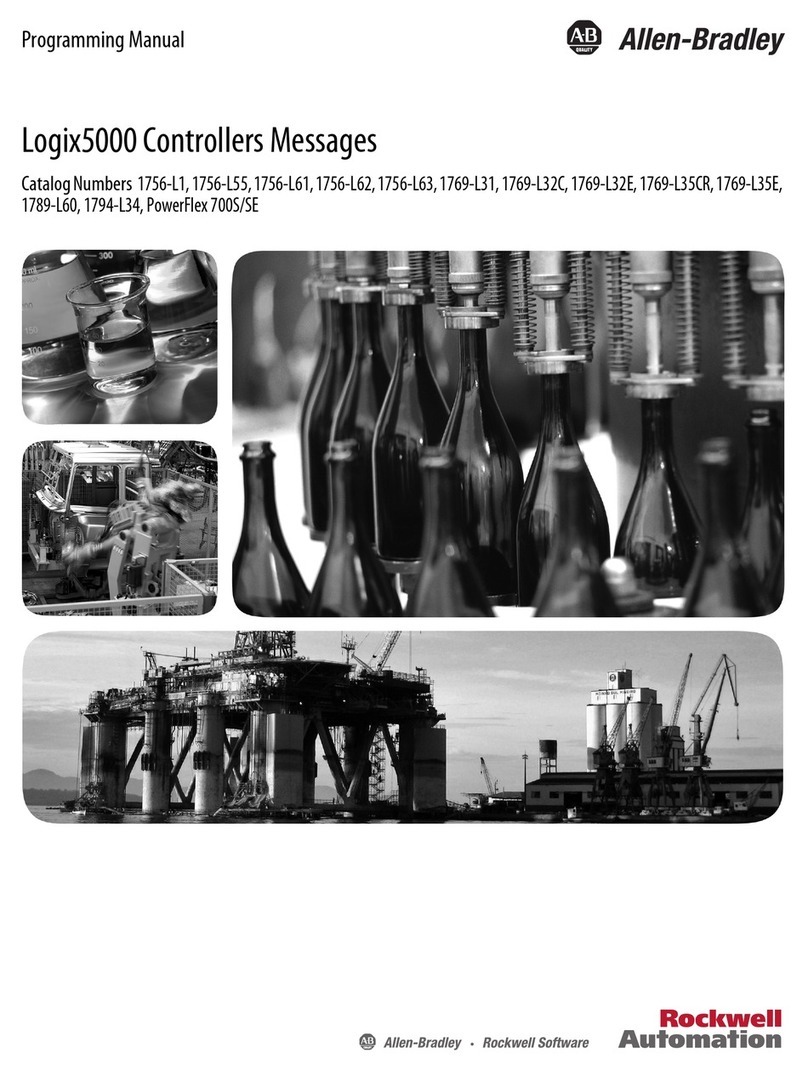
Allen-Bradley
Allen-Bradley 1756-L5 Programming manual
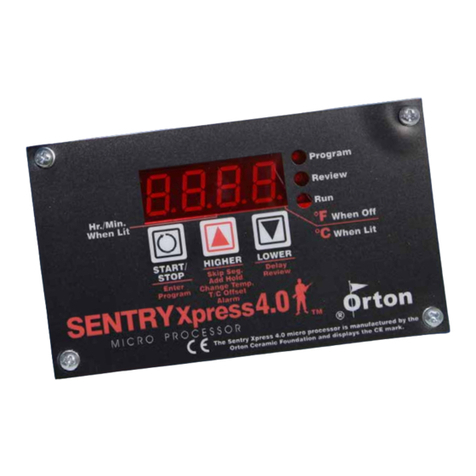
Orton
Orton Creative Glass Sentry Express 4.0 instructions
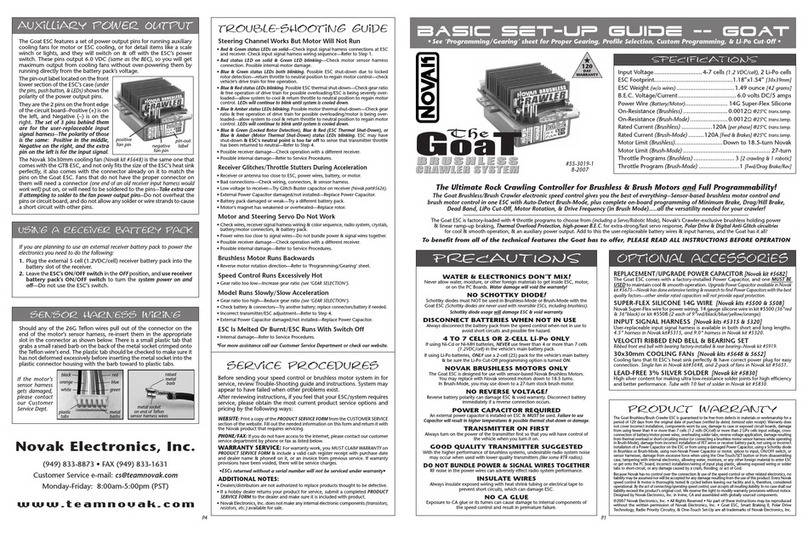
NOVAK
NOVAK GOAT BRUSHLESS CRAWLER SYSTEM - BASIC SETUP GUIDE... Setup guide
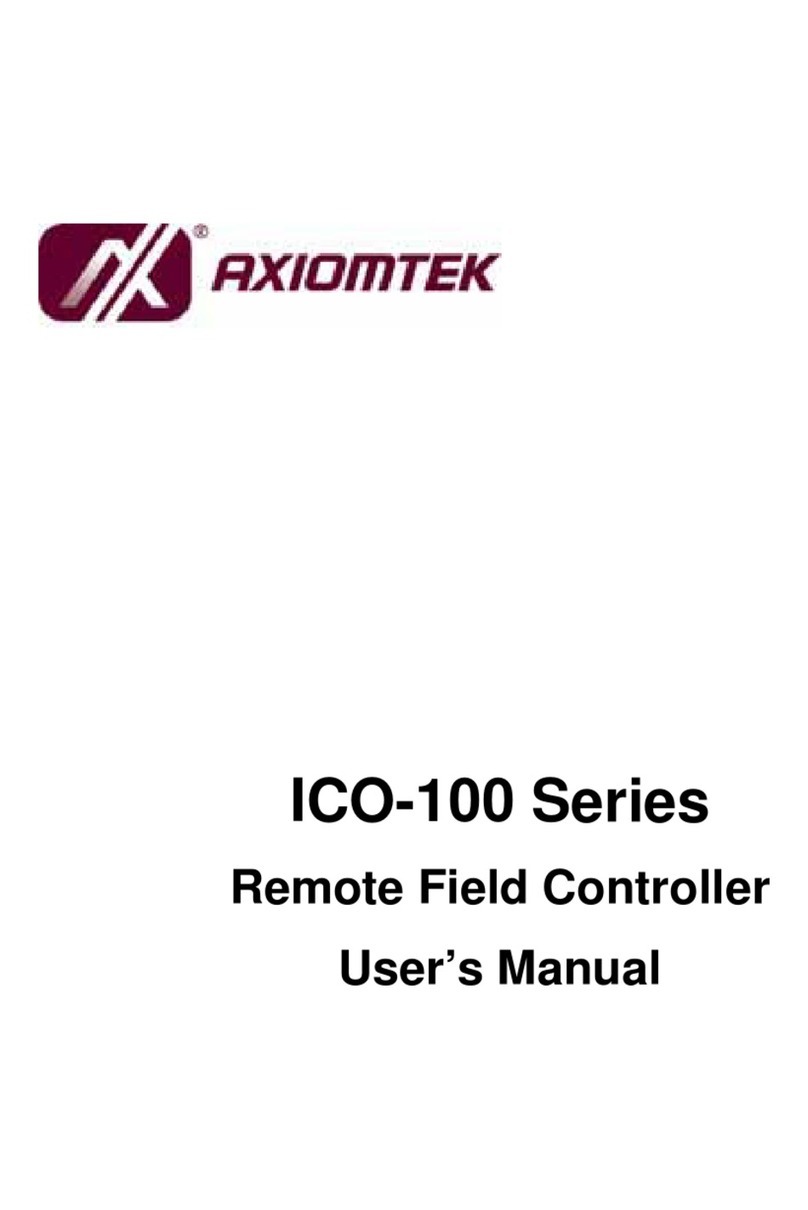
AXIOMTEK
AXIOMTEK ICO-100 Series user manual
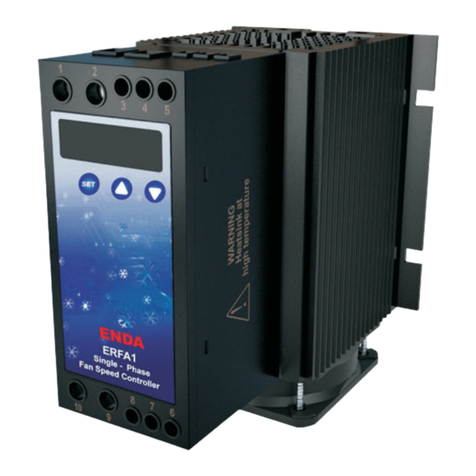
sisel
sisel ENDA ERFA1 Series quick start guide
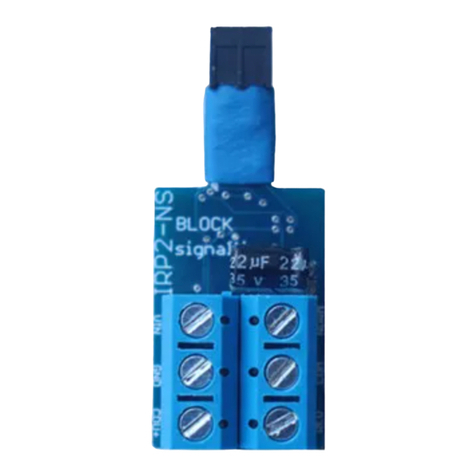
BLOCKsignalling
BLOCKsignalling ASP2-NS quick start guide
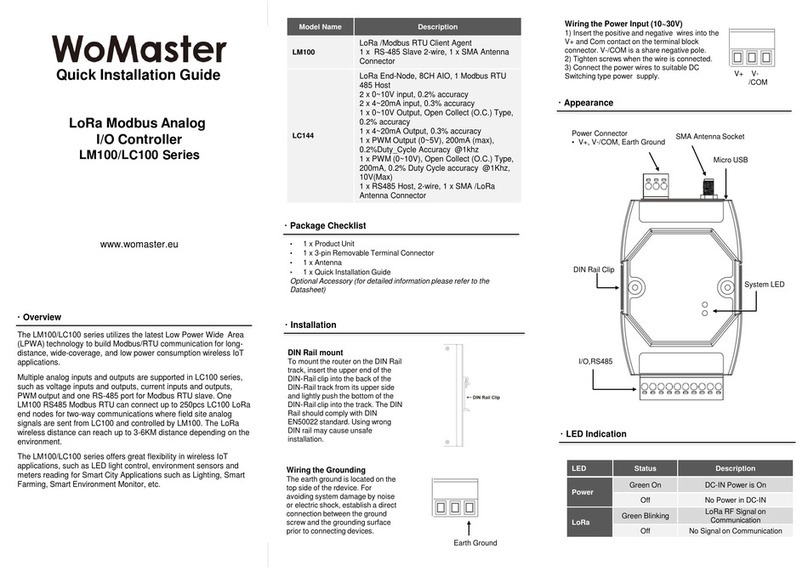
WoMaster
WoMaster LoRa LC144 Quick installation guide
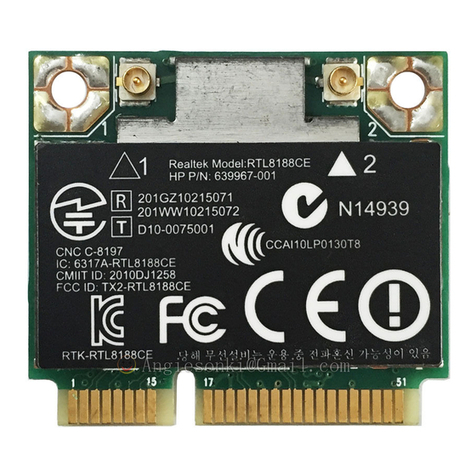
Realtek
Realtek RTL8188CE user manual
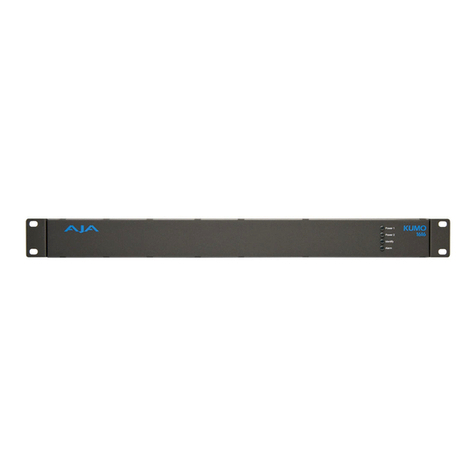
AJA
AJA kumo 1616 Installation and operation guide

SMC Networks
SMC Networks LEJS100T9 H Series Operation manual

Micro Air Corporation
Micro Air Corporation FX-1 Operation manual
